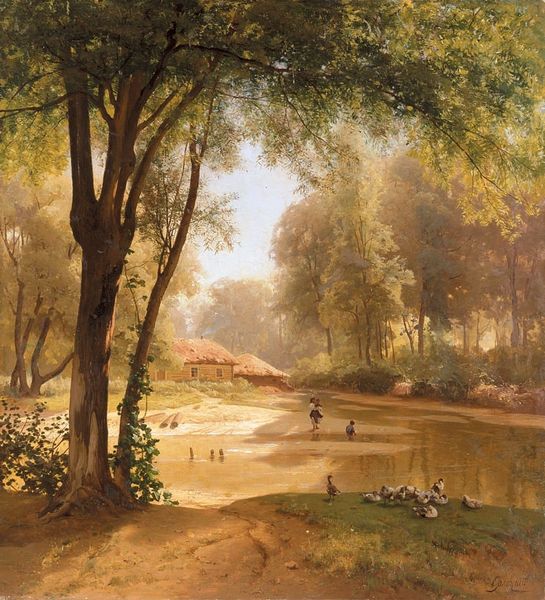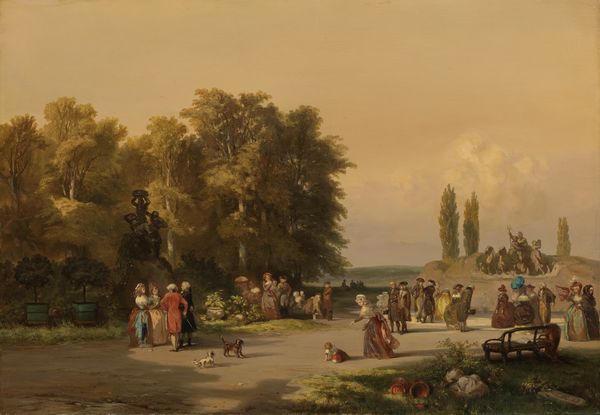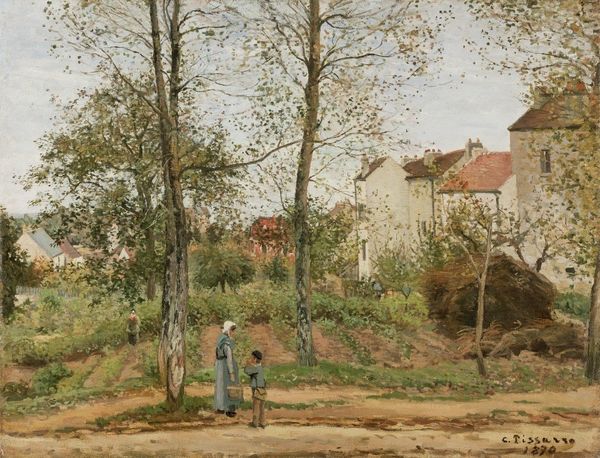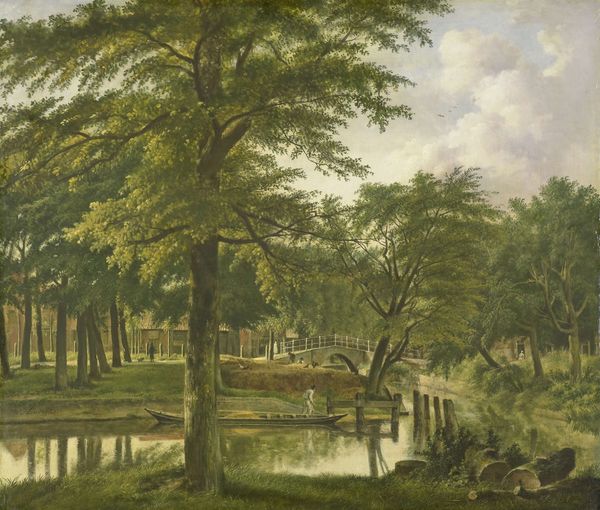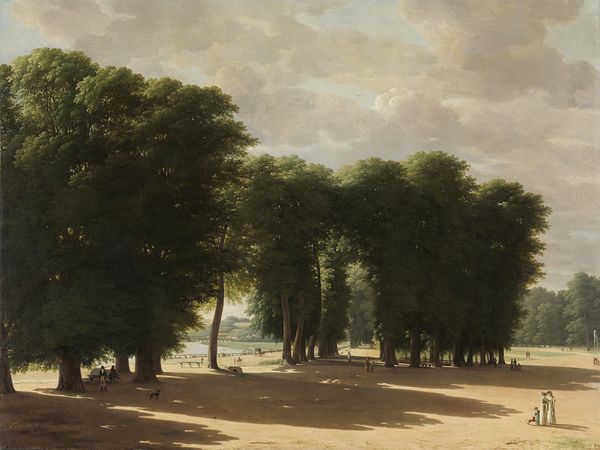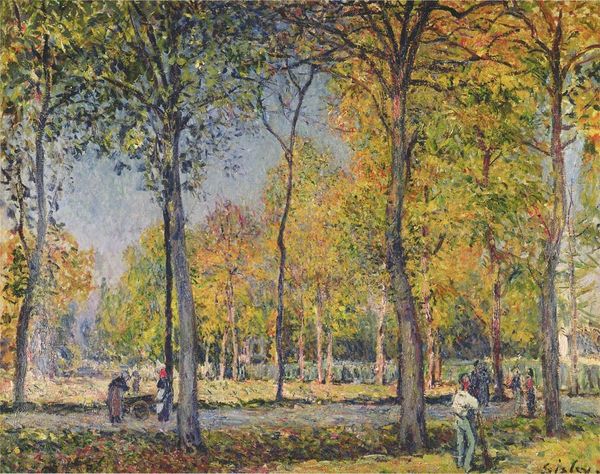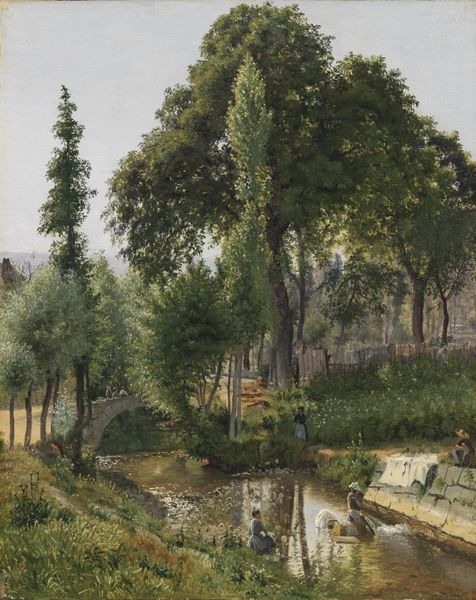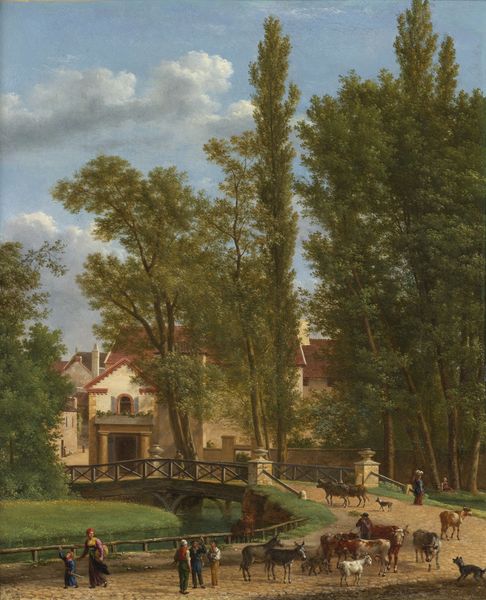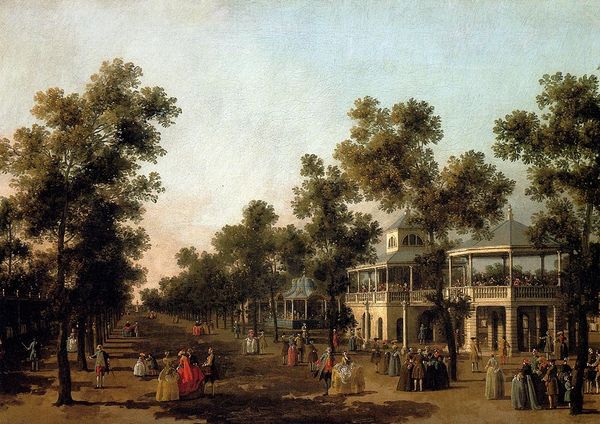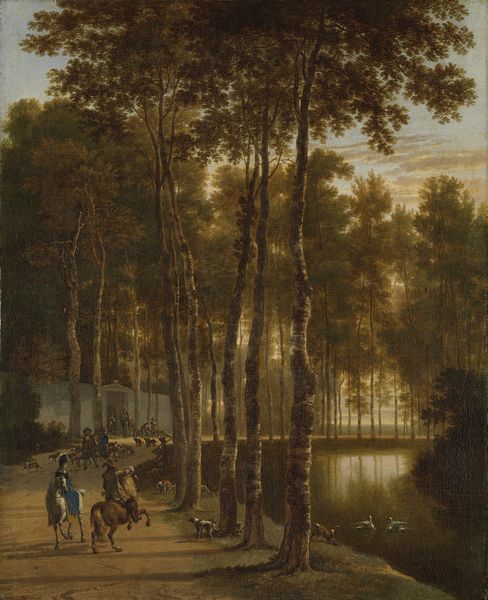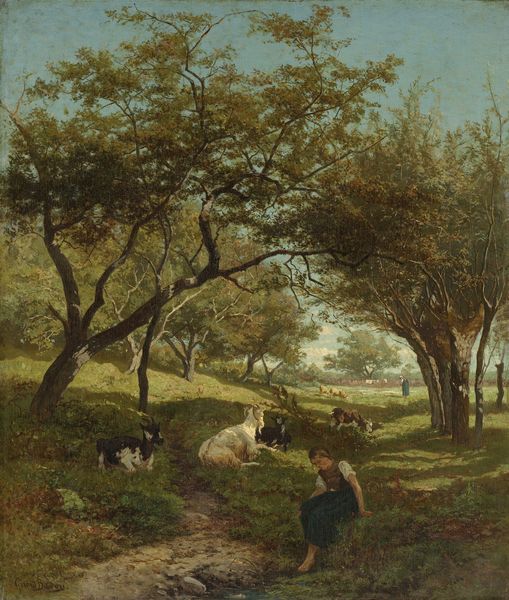
Dimensions: 43.6 × 53.5 cm (17 1/8 × 21 in.)
Copyright: Public Domain
Editor: This is "Boston Common," painted between 1850 and 1863, currently held at The Art Institute of Chicago. I am struck by how this snapshot of urban life captures a sense of tranquility, but it feels a bit posed, like a stage set. What do you see when you look at this piece? Curator: I see a deliberate construction of an idealized public space in a rapidly industrializing America. This wasn't simply about depicting what was *there*, but about projecting a specific vision of social harmony and civic pride. What do you notice about who is included and excluded? Editor: I see well-dressed figures; predominantly white, I assume middle to upper class citizens are featured promenading. I don't see anyone who appears working class or of color, although it's possible they were present in Boston Common during that time. Curator: Exactly. This absence speaks volumes. Artists, and their patrons, had a significant role in crafting how public spaces were perceived. Consider the political climate; the pre-Civil War era was marked by intense social stratification and racial tensions. A painting like this offers a sanitized view of urban reality. How do you think this image might have functioned in the context of the developing American art scene? Editor: Perhaps it served as a tool for reinforcing certain social values, maybe attempting to create a sense of national identity rooted in a particular class's experience? Curator: Precisely. Landscape paintings, particularly cityscapes, gained immense popularity then. But beyond just pretty pictures, they were subtly negotiating ideas about belonging, citizenship, and the role of public spaces in shaping collective consciousness. Editor: So, the beauty is deliberate, serving a purpose beyond aesthetics? It’s interesting how art becomes more complex when you analyze the forces at play during its creation. Curator: Indeed. Understanding those historical forces deepens our understanding of how art can be used to reflect or deflect from cultural events. I’ll certainly reflect on the composition, the placement of figures, and their implied stories the next time I consider imagery.
Comments
No comments
Be the first to comment and join the conversation on the ultimate creative platform.
